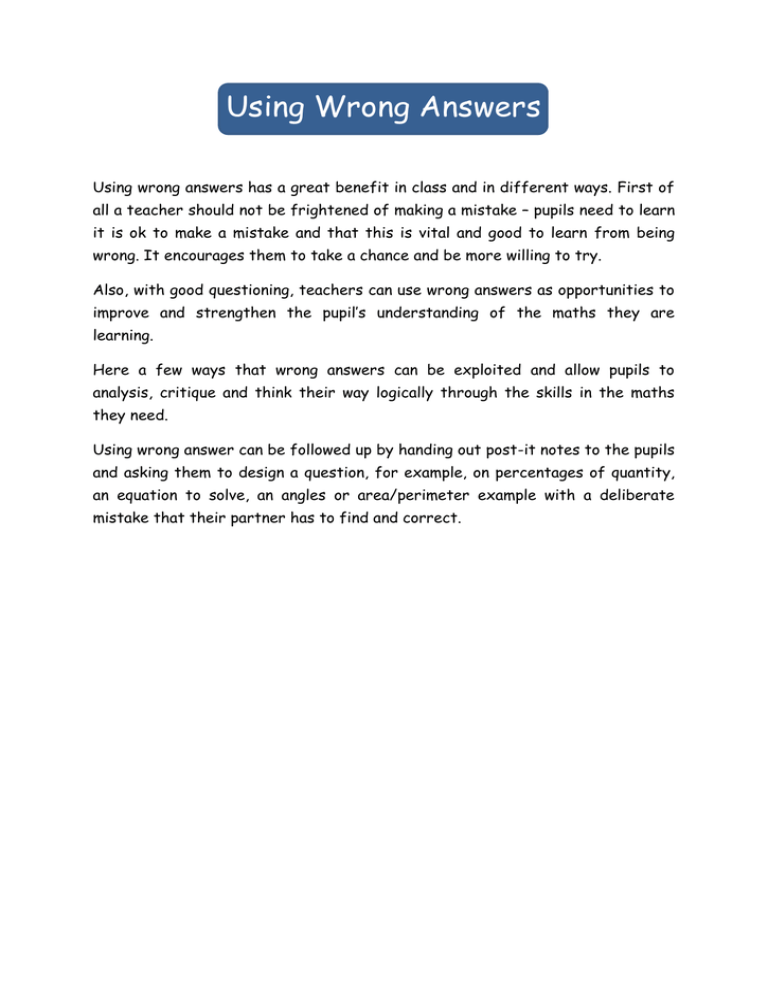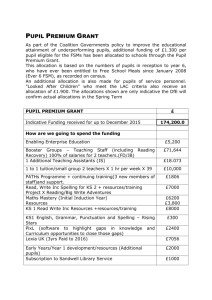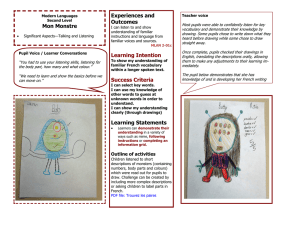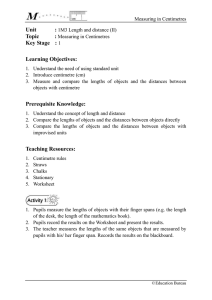Using Wrong Answers
advertisement

Using Wrong Answers Using wrong answers has a great benefit in class and in different ways. First of all a teacher should not be frightened of making a mistake – pupils need to learn it is ok to make a mistake and that this is vital and good to learn from being wrong. It encourages them to take a chance and be more willing to try. Also, with good questioning, teachers can use wrong answers as opportunities to improve and strengthen the pupil’s understanding of the maths they are learning. Here a few ways that wrong answers can be exploited and allow pupils to analysis, critique and think their way logically through the skills in the maths they need. Using wrong answer can be followed up by handing out post-it notes to the pupils and asking them to design a question, for example, on percentages of quantity, an equation to solve, an angles or area/perimeter example with a deliberate mistake that their partner has to find and correct. Lesson Starter idea – 1 question 3 solutions Pupil-teacher dialogue followed the puils being given 1 minute to work on their own and then two minutes in groups to find the correct answer and find what mistakes made the other answer wrong. Teacher questioning included: A vote for groups to express their view on correct solution Why did your group think this solution was correct? Can you please explain to group 3 why you think the solution they chose was incorrect? What is the error in solution … ? Is there anyway, you correct the mistake, you could proceed with that method to get correct answer? This lesson was actually part of a round of SMT observations and here is part of the feedback from the DHT to the member of staff “Pupil teams worked extremely effectively, ALL pupils were involved in the lesson and given lots of praise and encouragement for their responses. …… Pupils were also given tasks to complete independently against the chicken (the clock) which motivated them. …… Finding the correct solution from the three possibilities ensured that ALL pupils were challenged to think not only why one particular solution was correct but also why the other solution(s) was not correct. “ Here are some other examples of the above idea: Lesson idea – Share question, its mark and ask why it got this score Teacher shows a solution to an exam type problem from the topic they have been studying and tells the class “This question only scored . . . . Can you find out why?” “Can you offer ways to correct the solution and try and get full marks?” This challenges the class to work through the problem and think about the success criteria and the work needed at all stages of the problem to solve it correctly. Questions and bogus solutions can be made up by teacher, taken from a previous homework, test, prelim or NAB (with pupil name not attached of course) or based on a marking scheme with common pupil mistakes added in. Here is an example This solution to this question got 2 out of 4. Why? Questioning idea - “Teacher makes controversial statement” As mentioned in “Excellence in Mathematics”, less effective, closed questions can be improved by turning them into a statement. This matches the idea of investigating wrong answers and mistakes and challenges pupils to think and discuss rather than just answer yes or no. Here are some examples to think about. What is 8.2 + 7.8? becomes 8.2 + 7.8 makes 15. A triangle can have two right angles. The perimeter of this rectangle is equal to its area How many square millimetres are in a square centimetre? A square centimetre is the same as 100 square millimetres. A cuboid has 4 pairs of equal length edges. becomes








